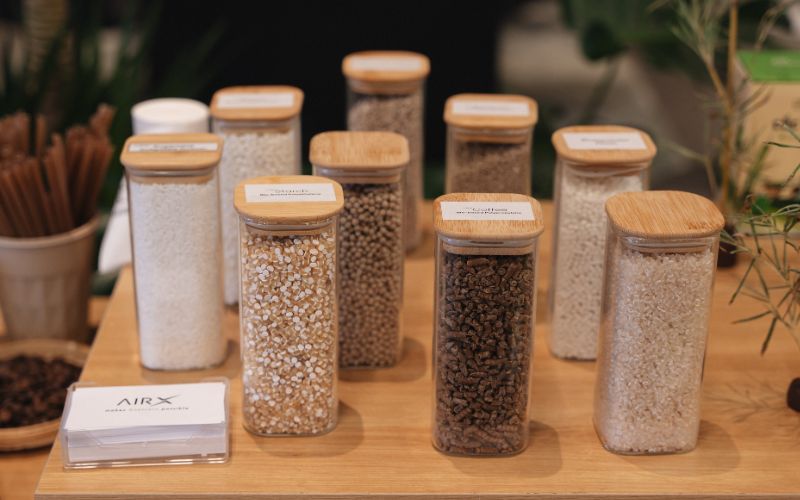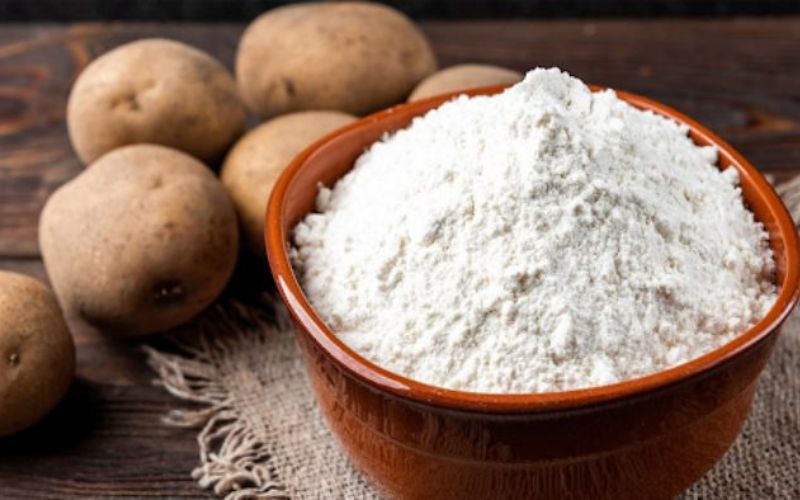How to Make Bioplastic: Exploring Sustainable Alternatives to Traditional Plastics
As the world increasingly turns towards sustainability, finding alternatives to traditional plastics has become a priority. One such solution is bioplastics, which are made from renewable resources and offer an eco-friendly alternative. In this guide, we’ll explore how to make bioplastic, its benefits, and why it’s gaining popularity in various industries.
Consist of:
- What is bioplastic?
- How to make bioplastic?
- Some products made from bioplastic.
- Where to buy bioplastic material.
What is bioplastic?
Bioplastics are plastics derived from renewable sources like corn starch, sugarcane, vegetable oils, coffee grounds, and fats. Unlike conventional plastics made from fossil fuels, bioplastics are more eco-friendly. They are biodegradableand compostable, allowing them to decompose naturally in the environment without causing damage.
Despite being made from plant-based materials, bioplastics offer the same functionality and durability as traditional plastics, making them useful for many applications. As awareness of plastic pollution grows, businesses and consumers are increasingly turning to bioplastics as a sustainable option to lower their carbon footprint.

Bioplastic materials
How to make bioplastic?
The raw materials for bioplastics
Before learning how to make bioplastic, it’s important to understand what it’s made from. Chemical engineers have developed biopolymers from various biomass sources. The choice of biomass is crucial in ensuring the desired properties of the plastic, as well as its environmental and economic viability in scaled-up production.The raw materials used to produce bioplastics differ depending on the type of bioplastic being created. Commonly used raw materials include:
Corn starch
Corn starch is a leading source for producing bio-based plastics. It’s extracted from the endosperm of corn kernels and mixed with glycerol to create a variety of bioplastics.

Corn starch to make bioplastic
Potato starch
Potato starch is another plant-based material used to make bioplastics, such as polylactic acid (PLA). PLA is biodegradable and often used in food packaging. The starch is extracted from potatoes, combined with glycerol and water, then heated and molded into shape. Starch-based thermoplastics account for nearly half of the bioplastics market, with innovative starch-based nanocomposites showing promising mechanical and thermal properties.

Potato starch to make bioplastic
Sugarcane
Sugarcane is another popular feedstock for bio-based plastics. It is harvested, processed to extract sugar, and fermented to produce ethanol. This ethanol serves as a precursor for bioplastic production. Sugarcane-based plastics are versatile, used in products ranging from kitchenware to medical devices.

Sugarcane to make bioplastic
Cellulose
Cellulose, an organic compound from plant cell walls, is also widely used for making bioplastics. It’s combined with plasticizers, colorants, and other additives to create bioplastics for packaging, disposable items, and even clothing.
Algae
Algae and cyanobacteria are gaining traction in the bioplastic industry due to their ability to thrive in low-nutrient environments and non-arable areas like wastewater. While algae-derived bioplastics are still in early development, they have potential for various uses, such as food packaging, greenhouse films, and protection nets.

Algae to make bioplastic
Other materials
Polysaccharides like chitosan can also be used to produce bioplastics. Chitosan dissolves in mildly acidic conditions, making it suitable for casting films. Additionally, researchers from Yale, the University of Wisconsin, and the University of Maryland have developed lignocellulosic bioplastics using wood powder, an affordable byproduct of the wood industry.
The process to make bioplastic
There are several types of bioplastics currently being produced, each using different manufacturing techniques. Some bioplastics, such as bio-PE, bio-PET, and bio-PP, can be manufactured using the same processes as their petroleum-based counterparts, allowing existing plastic production infrastructure to be adapted for bioplastic production.
In contrast, other bioplastics are developed from scratch using bio-based methods. These processes may involve microbial reactions or advanced techniques like nanotechnology synthesis, including epitaxial growth.
Another method for producing bioplastics involves extracting polymers from microorganisms. This process starts with centrifugation to separate the microorganisms, followed by press filtration and drying to obtain the final bioplastic material.
In some cases, bacteria are genetically modified to metabolize different feedstocks and improve their efficiency in converting these materials into polymers. Polyhydroxyalkanoates (PHA) are among the most well-researched bioplastics created through this microbial process.
Are bioplastic process cheaper than the original plastic?
Bioplastic production using biological resources offers a promising solution for reducing carbon emissions and tackling plastic waste. However, as of 2020, only about 1% of the world’s 368 million tonnes of plastic is bio-based or biodegradable, according to European Bioplastics.

While alternative methods using agricultural byproducts or waste have been available for some time, high production costs remain a challenge. A 2022 study in Cleaner Engineering and Technologyreports that the cost of producing polylactic acid (PLA) bioplastics ranges from $844/t to $2,410/t, depending on factors like feedstocks, technology, and labor.
Some products made from bioplastic.
As global awareness of environmental issues grows, the demand for sustainable products has risen, and bioplastics are gaining attention as a viable solution. Below are some popular items made from bioplastics:
- Food packaging: bags, containers, and films
- Disposable cutlery and tableware: utensils, cups, and plates
- Plant pots: bioplastic pots for plants
- Shopping bags: bioplastic shopping bags as an alternative to regular plastic bags
- Clothing: fibers made from bioplastic
- 3D printing filament: bioplastic filament for 3D printers
- Toys: eco-friendly bioplastic toys for children

Products from Bioplastic
Where to buy bioplastic material?
If you're looking for bioplastic materials, AirX is a trusted supplier offering eco-friendly solutions. AirX is the world’s first carbon-negative bio-material made from coffee grounds manufacturer.
We specialize in producing Bioplastic, bio-based composites using recycled carbohydrates derived from by-products such as coffee grounds, coconut husk, husk, and bamboo. Our goal is to promote sustainability through the use of eco-friendly materials.

Bioplastic from AirX
We are always here to help and provide the best service possible. If you have any questions or would like to receive advice and feedback directly from our sales staff, please do not hesitate to contact us. You can reach us through:
- Whatsapp: +84 969 742 950
- Email: [email protected]
We look forward to hearing from you!

